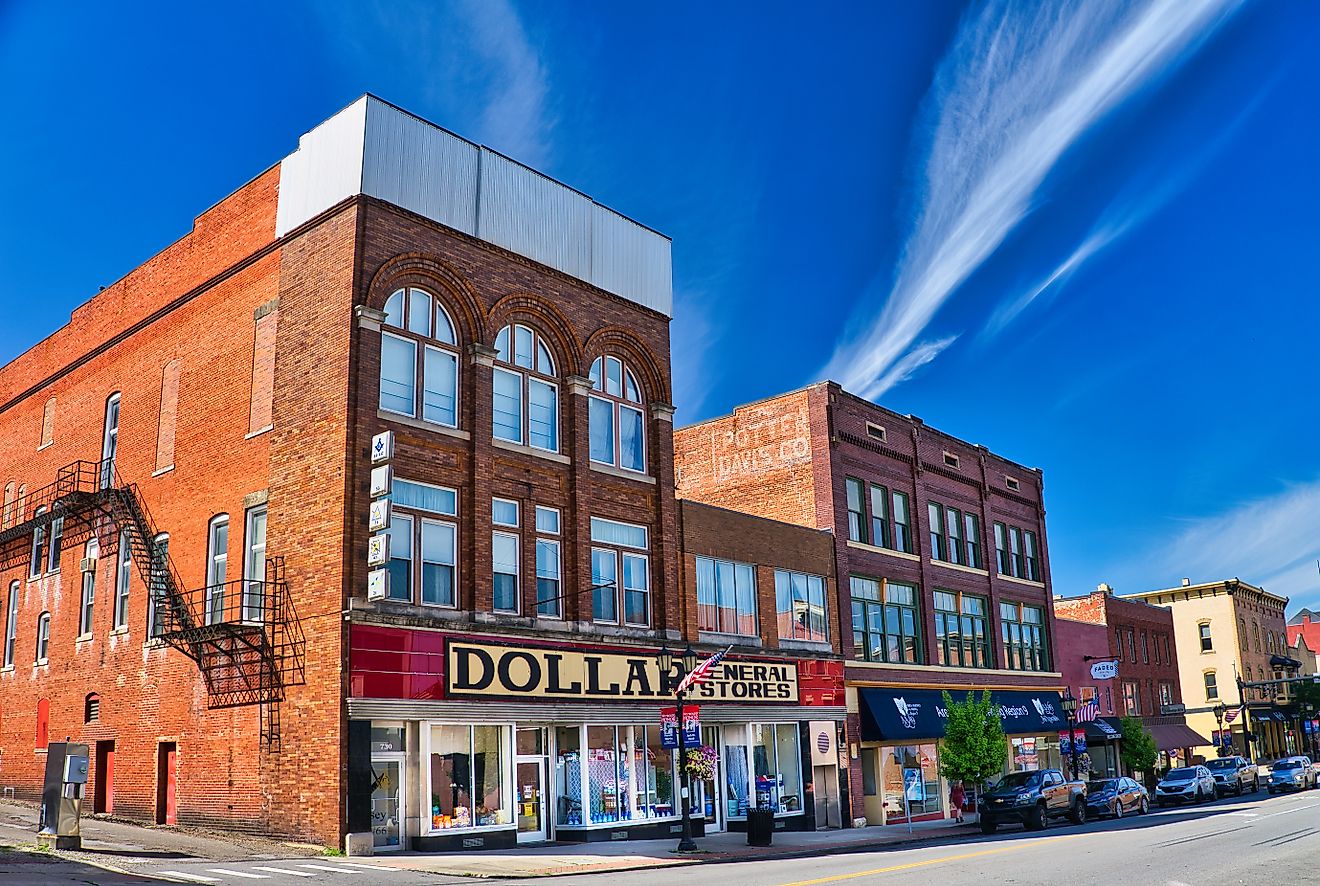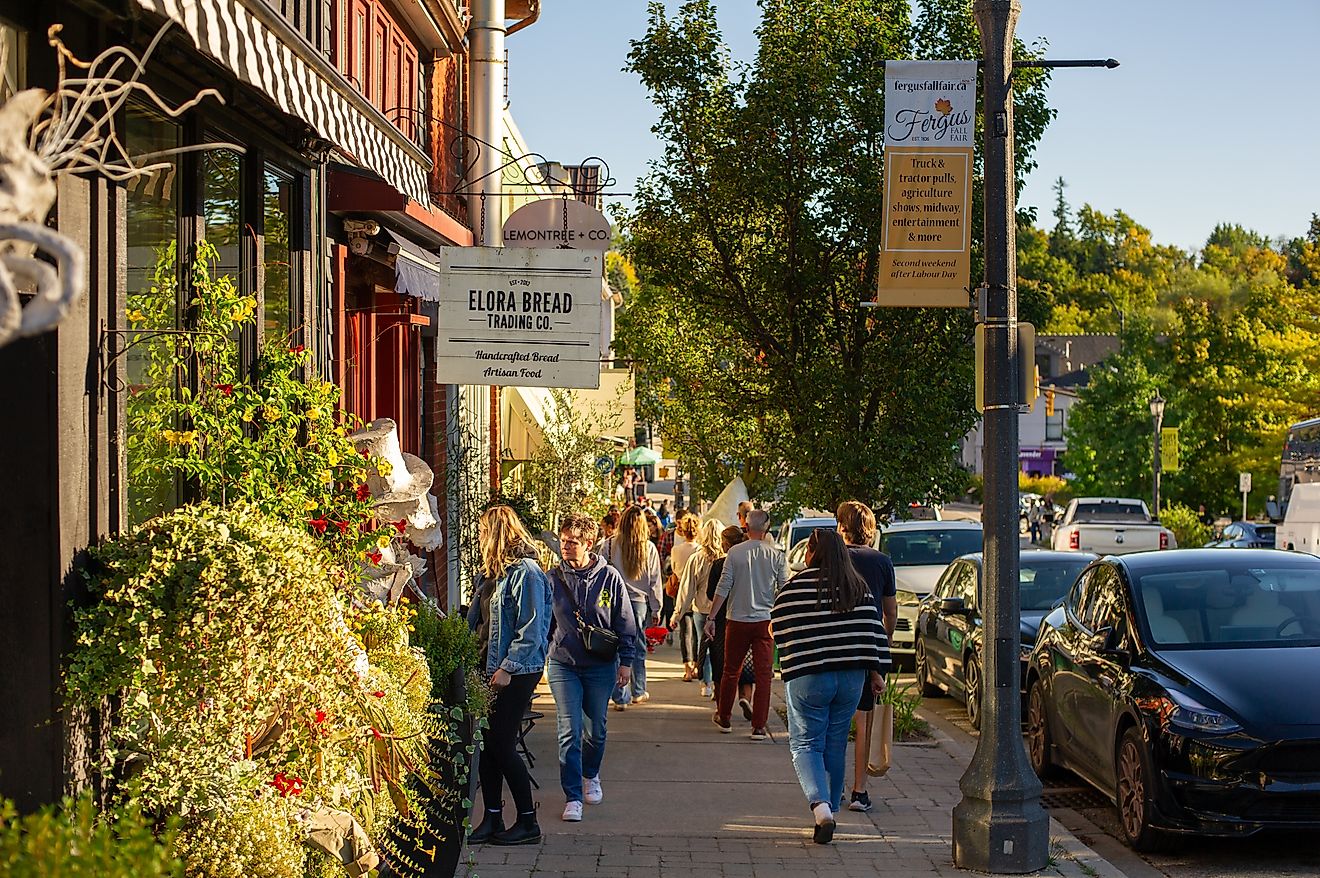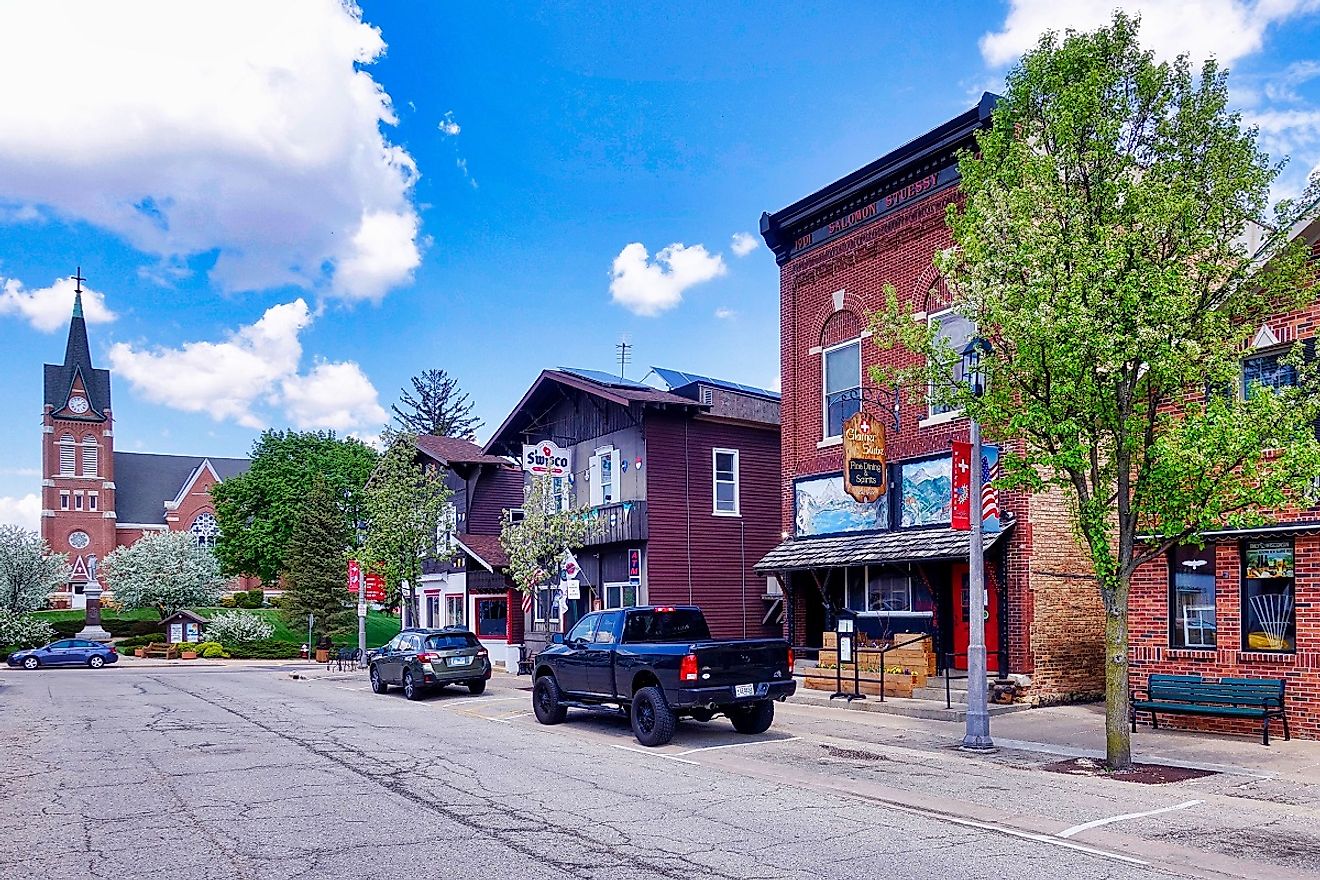
12 Must-See Historic Towns in Wisconsin
Located smack dab at the center of the American Midwest, Wisconsin is renowned for its diverse landscapes, vibrant culture, and rich legacy. Known as the “Badger State,” Wisconsin earned its nickname not from the burrowing animals but from the early lead miners who dug temporary homes in the hillsides, reminiscent of badger dens. The state boasts fascinating geographical features, from the Great Lakes and the mighty Mississippi River to rolling farmlands and lush forests.
Wisconsin’s must-see historic towns offer visitors a captivating journey through time, showcasing the state’s steeped heritage and cultural significance. Wisconsin’s historic towns offer a wealth of experiences celebrating the timeless allure of the Badger State’s heritage, from exploring historic museums to marveling at the grandeur of Victorian mansions.
Cambridge
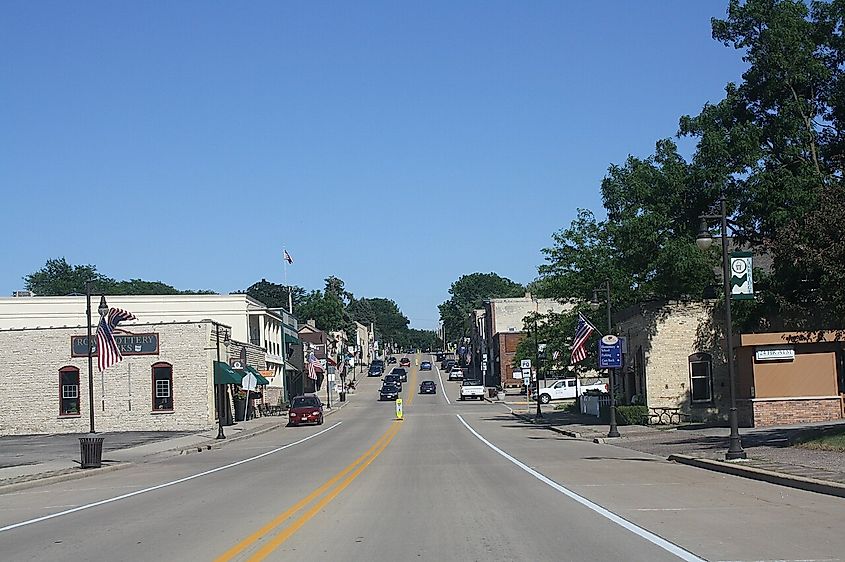
Cambridge was chosen as a settlement by European immigrants in the 19th Century, drawn to the fertile lands along the banks of the Koshkonong Creek. Interestingly, The town's historic downtown district retains much of its 19th Century Charm. Step Inside the Cambridge Historic School and journey back to the days of one-room schoolhouses and pioneer education. Built in 1906, this beautifully restored schoolhouse now serves as a museum showcasing photos and memorabilia that tell the story of education in rural Wisconsin throughout the years.
Raise a glass to history at the Cambridge Winery, housed in a beautifully restored 19th-century building along Main Street. It pays homage to the town's Agricultural heritage while allowing visitors to sample Wisconsin’s burgeoning wine industry. Outdoor enthusiasts will have their hands full at Cam-Rock County Park. Originally a limestone quarry, it is now jam-packed with angling, hiking, and cycling.
Hudson

Hudson’s historical significance dates back to its founding in 1840 by Louis Massey and his family. The town quickly became a hub for activity along the St Croix River, serving as a vital stop for steamboats and fur traders traveling between the Great Lakes and the Mississippi River. Constructed in 1855, the Octagon House Museum gives visitors a glimpse into life in 19th-century Wisconsin with guided tours showcasing period furnishings, decorative arts, and exhibits on Hudson’s history, highlighting the legacy of its pioneering families.
Originally established as a public park in the late 19th century, Prospect Park is a peaceful retreat amidst lush greenery and stunning vistas. It has walking trails and picnic areas, making it an ideal setting for a tranquil afternoon. Furthermore, you can experience the beauty of the St. Croix River at Lakefront Park. Visitors can enjoy fishing off the pier, paddleboarding, or simply soaking in the serene ambiance of the waterfront.
Mineral Point
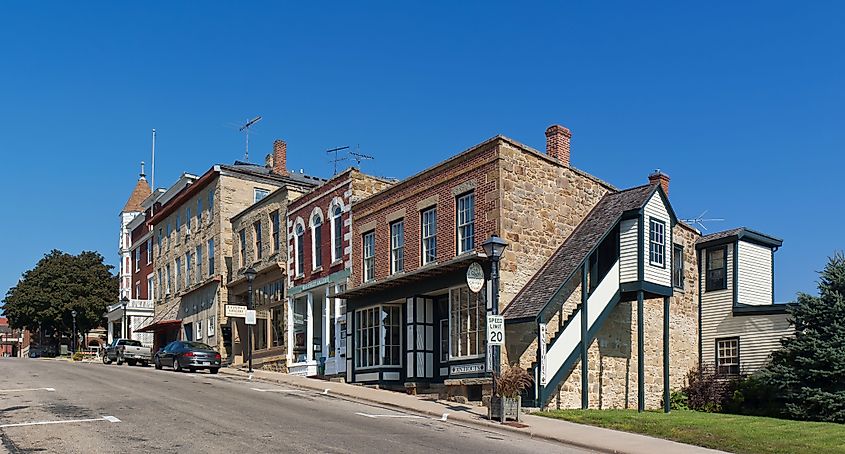
Mineral Point holds a special place in Wisconsin’s history as one of the state’s oldest settlements and a center of lead mining during the 19th century. The town’s early prosperity and growth are evident in its historic architecture, including well-preserved stone cottages, storefronts, and public buildings. The Mineral Point Railroad Museum is where locals and guests convene to delve into the fascinating railroading history. Established in a restored depot dating back to the 19th century, its exhibits shed light on the impact of the railroad in shaping the town's economy.
Orchard Lawn is a historic estate from the mid-19th century encompassing a Greek Revival-style mansion, lush gardens, and a charming carriage house, giving insights into the affluent lifestyles of the town’s early settlers. Discover the vibrant arts scene of Mineral Point at the Mineral Point Opera House, a cultural landmark since 1914. The theater hosts a variety of performances, including live music, providing entertainment and enrichment for residents and visitors alike.
Cedarburg
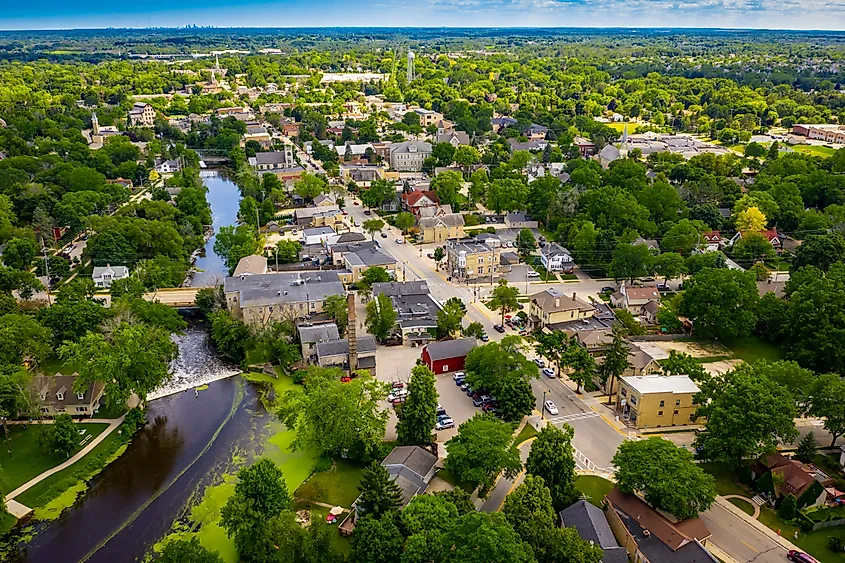
Cedarburg’s history is deeply intertwined with its German immigrant roots and role as a thriving mill town during the 19th century. Many of Cedarburg’s historic buildings remain intact today, including charming limestone and brick structures, providing a glimpse into the town's storied past and architectural heritage. A historic mill building of the 19th Century is the home of Cedarburg History Museum which has wonderful exhibits on the town’s early settlers, industrial heritage, and cultural heritage, with photographs, artifacts, and interactive displays on its evolution from a frontier settlement.
You can find yourself marveling at the notable Cedarburg Covered Bridge, a beloved Cedar Creek landmark. Built in 1876, it is one of Wisconsin's last remaining covered bridges and symbolizes the town's enduring charm and heritage. Finally, art connoisseurs can visit the Cedarburg Art Museum to admire a diverse collection of contemporary art, including paintings, sculptures, and mixed media works by local and regional artists.
New Glarus
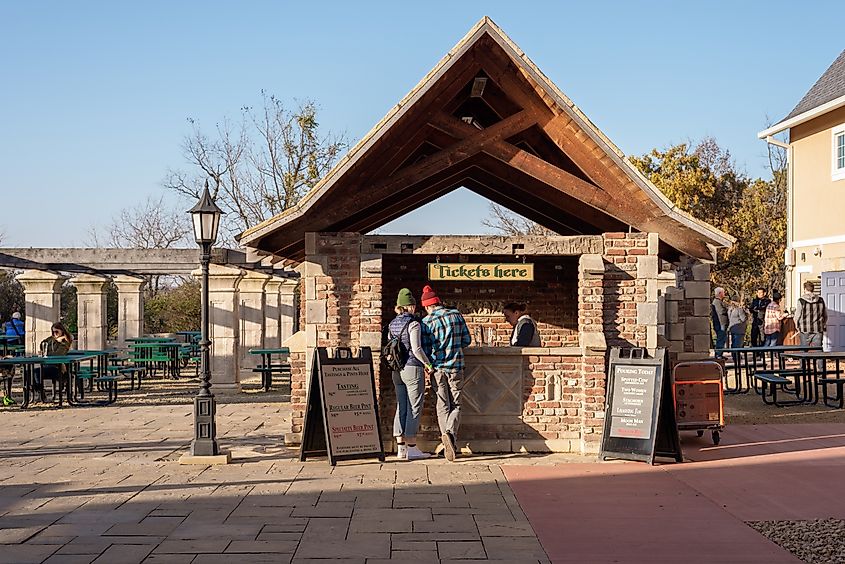
The town’s history is deeply rooted in its Swiss immigrant heritage from the 1840s when settlers from the canton of Glarus in Switzerland established the town. The pioneers brought their traditions, architecture, and dairy farming skills, shaping New Glarus into a unique cultural enclave in the Midwest. Step into the past at the Chalet of the Golden Fleece Museum, a historic Swiss-style Chalet showcasing the town’s immigration heritage. This 1930s landmark flaunts exhibits on Swiss Immigration and Dairy Farming, paying tribute to the town’s Swiss Founders.
The New Glarus Woods State Park is where guests flock to be one with Mother Nature, with its hiking and skiing trails winding through woodlands, prairies, and wetlands providing the perfect bedrock for outdoor fun. Meanwhile, visitors can also enjoy hiking, biking, or horseback riding along the iconic Sugar River Trail, famous for stunning views of farmland, forests, and the meandering Sugar River.
Rhinelander

Named after Frederic W. Rhinelander, a prominent New York Businessman, the town prospered as a logging and lumber production hub, attracting settlers, entrepreneurs, and adventurers seeking their fortunes in the Northwoods. Pay homage to football history at the grave of John Heisman, the legendary football coach and namesake of the prestigious Heisman trophy. Located in Rhinelander’s Forest Home Cemetery, Heisman’s final resting place is marked by a monument commemorating his contributions to the sport.
ArtStart features rotating exhibitions of contemporary art and workshops, classes, and events for art lovers of all ages. Visitors can explore galleries showcasing local and regional artwork or participate in hands-on art activities that inspire creativity and cultural appreciation. Coined after the legendary Hodag, a fearsome creature said to inhabit the Northwoods, Hodag Park is brimmed with recreational activities such as swimming and picnicking.
Pepin
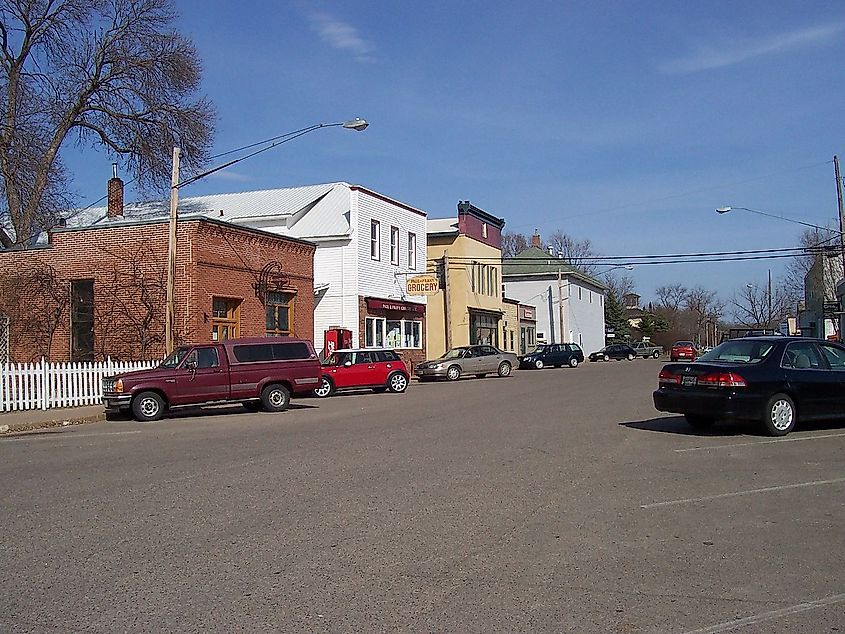
This quaint community’s legacy goes back to the 19th Century when it served as a bustling river port and trading center along the Mississippi River. Originally settled by Native American Tribes followed by European Immigrants, Pepin flourished as a hub of commerce and transportation. The Pepin Depot Museum guests can explore artifacts, photographs, and memorabilia that tell the story of the town’s development, including its role as a railroad town, riverport, and agricultural center.
Experience the beauty of Lake Pepin from the water at the Pepin Marina. Whether cruising on a pontoon boat, kayaking along the shoreline, or fishing for walleye and bass, visitors can indulge in various recreational activities amidst the natural splendor. Paying tribute to the beloved author Laura Ingalls, Wilder Park features a replica of the log cabin where Wilder was born, alongside interactive displays and beautiful overlooks of Lake Pepin.
Potosi

Sitting along the scenic Mississippi River, Potosi’s early settlers were drawn to the area by the promise of rich lead mines, leading to rapid growth and prosperity in the 19th Century. Take a trip through time at the Passage Thru Time Museum with premier exhibitions on Potosi’s lead mining era, brewing history, and local culture alongside photos and relics on its evolution from a frontier settlement to a thriving community.
Discover the fascinating history of brewing in America at the ABA National Brewery Museum. History buffs can uncover facts about the brewing process, Prohibition's impact, and craft brewing's resurgence in the United States. Immerse yourself in the natural beauty of the Driftless region on the Badger Hut Trails, called so after the lead miner’s badger huts, it is a network of hiking and biking trails that wind through scenic woodlands, prairies, and river valleys surrounding the picturesque Potosi.
Osceola
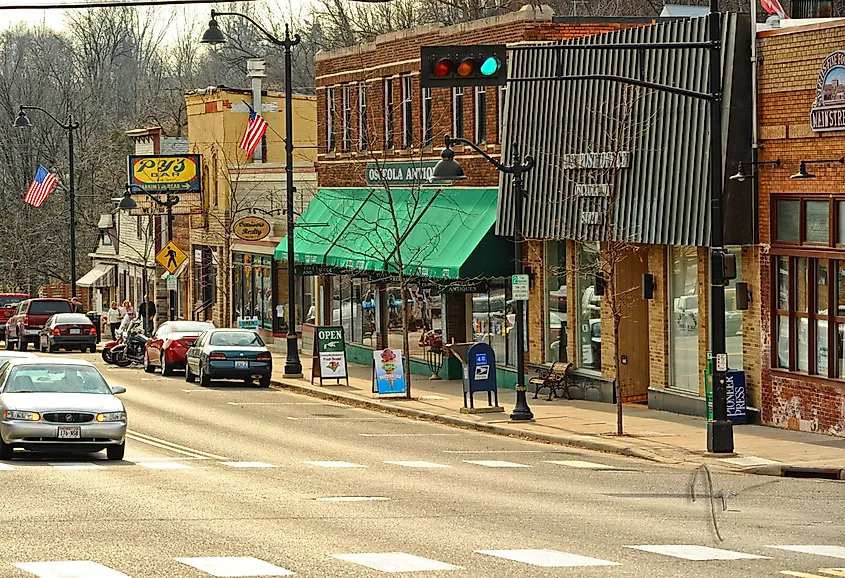
Titled after the Seminole leader, Osceola, the town proliferated during the 19th century with the arrival of steamboats and the construction of railroads, which facilitated trade and commerce in the region. Step aboard a heritage train and journey through time on the Osceola and St. Croix Valley Railway. The railway affords guests scenic excursions along the St. Croix River, providing stunning views of the surrounding countryside and glimpses into the region's rich history.
St. Croix Artbarn promotes creativity and cultural enrichment with galleries, studios, and performance spaces for visitors to explore and where artisans come to showcase their work. Experience the beauty of nature at Wilke Glen and Cascade Falls, a scenic park located along the banks of the St. Croix River. With plenty of activities to choose from, like hiking to the top of Cascade Falls or simply relaxing by the river, visitors can reconnect with the beauty of the Northwoods in this serene setting.
Port Washington

Port Washington is a waterfront town with a unique maritime charm. The town’s early settlers were drawn to the area by its natural harbor and strategic location along Lake Michigan, facilitating trade and shipping. Port Washington Historical Society 1860 Light Station is a historical landmark that sheds light on the life of a lighthouse keeper and the importance of navigation on the Great Lakes. Visitors can also enjoy tours of the keeper's quarters and panoramic lake and harbor views.
Judge Eghart House is a beautifully restored Victorian Era home that serves as a living history museum. The 1872 structure boasts period furnishings, decor, and artifacts of prominent families of the area’s past. You can hail the brave men and women who served their country at Veterans Memorial Park and Guenther Picnic Area. The park hosts memorials honoring military veterans, picnic areas, walking paths, and scenic overlooks of the lake, all for its visitors to enjoy.
Berlin
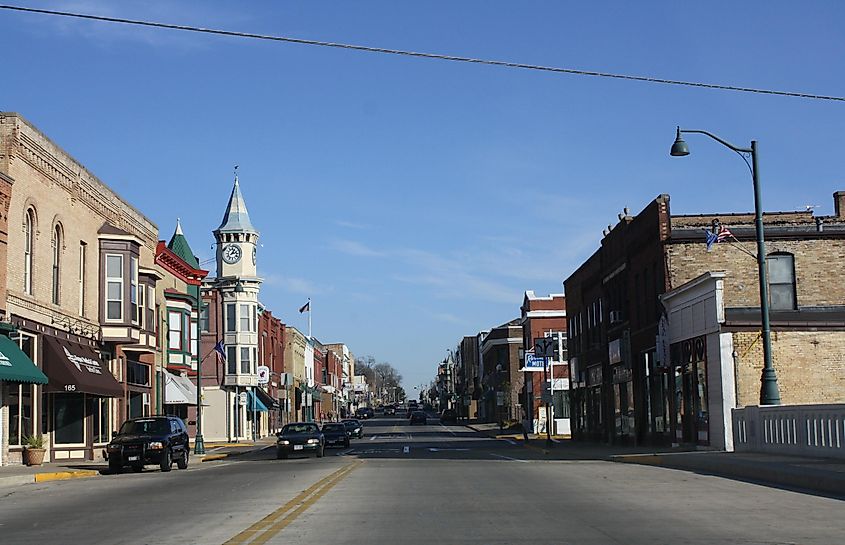
This small town beckons tourists with its charm, rich history, and rural beauty. The town’s early prosperity was fuelled by the arrival of railroads, which increased transportation and trade throughout the region. Located in a historic building downtown, the Berlin Area Historical Society is filled with exhibits on the town’s railroad history, manufacturing legacy, and early settlers, as well as photographs and archival materials on events that shaped Berlin’s identity.
Visitors to Nathan Strong Park can plan for a picnic while kids enjoy themselves on the swings. Expose those taste buds to a delicious array of handcrafted cheeses made from fresh, locally sourced milk, including aged cheddar, at the popular Willow Creek Creamery Cheese Shop.
Chippewa Falls
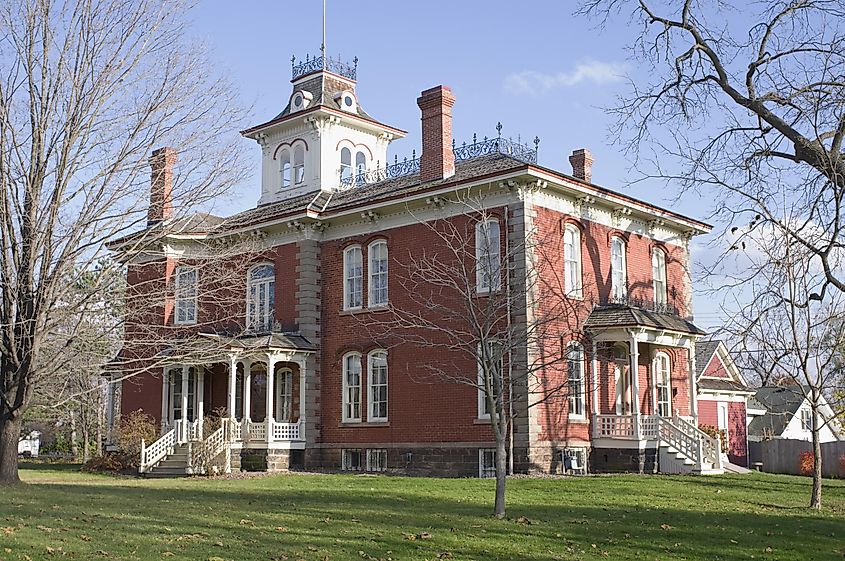
Last but not least is the lovely town of Chippewa Falls, which enchants visitors with its industrial heritage, historic architecture, and scenic riverfront setting. Chippewa Falls Museum of Industry and Technology is a cultural institution dedicated to preserving and interpreting the town’s industrial heritage. This iconic monument is where locals and visitors alike escape to explore artifacts, machinery, and interactive displays that highlight the town's contribution to industry and technology from the lumber boom era to the present day.
Experience the grandeur of the town’s Victorian past at the 1870s-built Cook Rutledge Mansion. It houses elegant furnishings and architectural details with unique insights into the lifestyle of Chippewa Fall’s elite during the Gilded Age. For an expedition into nature, Riverfront Park gives visitors chances to stroll along the riverbank, watch for wildlife, and revel in the scenic vistas of the Chippewa River while taking in the sights and sounds of nature.
Final Thoughts
As the curtains close on this exploration of Wisconsin’s must-see historic towns, it is clear that each destination offers a unique tapestry of heritage, culture, and natural beauty. Whether wandering through museums, touring historic homes, or soaking in scenic landscapes, travelers are treated to a journey through Wisconsin’s past and present.From the bustling ports of Port Washington to the tranquil parks of Osceola, Wisconsin’s historic towns stand as testaments to the enduring spirit of community, innovation, and resilience. A visit to either one of these historic towns promises to give visitors inspiration from stories of the past and promises of new adventures yet to come.



